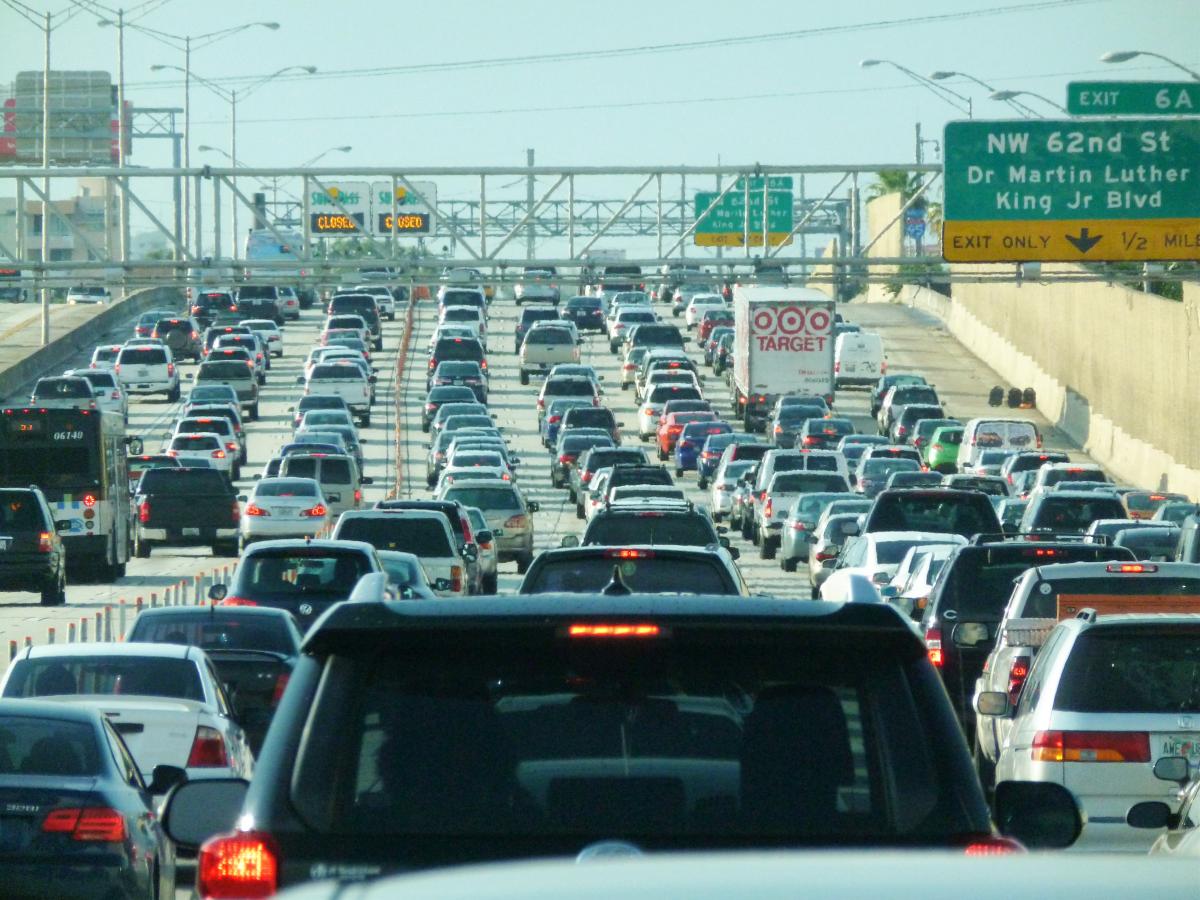Gridlock—The Grim Side of Growth

It’s time for another density cap. Back in the mid-1970s, Perfect Town (also known as Boca Raton) got panicky when it saw tall buildings sprouting on Fort Lauderdale’s beach. Fearing contagion, it passed a law limiting the number of people who could live in Boca. Keep in mind that this was a time when the Royal Palm Polo Club, in the vicinity of what is now Town Center, was as far as Boca extended to the west. I-95 was not yet.
Developers were upset as the city downsized their plans, and the lawsuit that followed found the new law unconstitutional as hell. But the litigation gave Boca several years grace and enabled it to enact a variety of ordinances, including one affecting signs, that set the tone for what we like to call Perfect Town. Ironically, it also attracted new residents seeking to escape what they considered clutter and congestion in communities to the south. And Boca did not become another Fort Lauderdale.
Lately, however, it has been trying to do so. The anti-growth public officials slowly declined in numbers and influence. Now Boca has battles again between development interests and residents concerned about the traffic woes that go with it. Opponents of growth might even summon the old battle cry—“not another Fort Lauderdale,” and this time it is even more apt than 40 years ago. But the fact is even as Boca becomes a little more like Fort Lauderdale, Fort Lauderdale is widening the gap by becoming more like Miami and New York.
Anybody living in or around Fort Lauderdale, and the thousands of people who commute to work in the city, don’t need any explanation of the problem. Everybody is complaining about the absurdly rapid increase in traffic congestion over the last year or two, since the recession called a temporary halt to development. It seems as if overnight the main thoroughfare through downtown—Federal Highway—has been transformed from rows of low-rise businesses, some of them less than attractive, to blocks of closely packed apartment buildings. Imposing as they are, these new structures are dwarfed by the soaring towers just a few blocks away in the Las Olas Boulevard area.
It makes sense to have concentrations of housing near the new Brightline station being constructed on the FEC tracks just north of Broward Boulevard. That rail corridor is going to become very busy, especially when Tri-Rail trains are inevitably added to the fast Brightline train from Miami to West Palm Beach (and eventually to Orlando). Having residents within walking distance of the station is only realistic.
The downside of all this frantic building is that in welcoming new residents to an increasingly vibrant downtown, the city is destroying the quality of life in the nearby neighborhoods that are bearing the brunt of the exploding traffic. Those neighborhoods are some of the most pleasant and convenient locales in the state. Few cities have such suburban-like communities ringing their commercial district, within walking distance of shops and restaurants, and for many, even the beach.
But that is changing rapidly and the people are angry. The main thoroughfares are backing up to the point of gridlock. A traffic light changes and nobody can move because cross traffic blocks the intersection. Horns blare futilely. Tempers flare. And in frustration, drivers take to side streets, cutting through what were once quiet neighborhoods. Streets so narrow that they don’t even have posted speed limits, see cars racing through them. These are streets where people walk dogs, stroll with baby carriages and jog. At least they used to.
A cut through driver is often a dangerous driver, impatient, going much too fast, barely slowing for stop signs. All this new construction is more than an inconvenience. It is creating safety issues. The situation would be bad enough if all development near downtown were to stop today, but residents of the affected neighborhoods see nothing but more building on the horizon. There are many projects already approved. Lots that have been cleared await more apartments and even a few new hotels.
This is not an isolated problem. As we go to press, West Palm Beach announced a plan to control gridlock in its downtown. One idea is to get people out of cars, on to bicycles. Good luck with that. The real question: Is rampant growth inevitable? Does a community have an obligation to the concept of property rights to destroy itself in the process? The answer to that can be found north of Palm Beach. Stuart and Vero Beach made a decision decades ago not to become another Fort Lauderdale. Which is why so many people who used to be here are now there.
Image via
